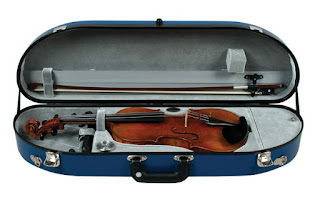Today, I thought I would explore something fairly simple and easy to talk about: music stands! These are so ubiquitous that it hardly seems worth mentioning. However, having the right equipment can make practicing and playing that much easier and even convenient! And when it’s easy to play, you play and practice more. Let’s take a look!
The Manhasset Model 48
Here it is folks, the Cadillac, the standard by which all others are judged. Seen across the land in band and orchestra rooms nationwide, the Manhasset 48 is what we all learned to play on. There are lots of things this stand taught us:
• Pencil writing is visible on the desk itself!
• You can cross out various letters in the brand name to spell a dirty word!
• It can rise or sink magically, while you are performing.
• It wobbles, but you can fix that easily by tightening the greasy nut at the bottom
• The metal shop is capable of welding broken stands back together for another 20 years of service!
Seriously, it’s a great stand if it’s taken care of. It’s also perfect for home use, if you have the space. Standing at attention with your music ready to play at all times (and with your instrument stored on a stand as well), it only takes seconds before you are playing. Excellent for spontaneous performances! But, it’s not very portable, and that leads us to:
The PortaStand Minstrel
Seriously. I LOVE this stand. It has a solid desk that holds all of your music and pencils, but the base folds into a nice portable package that is easy to tote around. Once set up, it accommodates heights from super low (think saxes in the jazz band) to tabletops, to standing. It looks professional too! Highly recommend, and you can find more info here: https://portastand.com/
Heavy-Duty Wire Stand
This type of stand is available from several manufacturers, but the gold standard is from K&M. This provides the best combination of stability and ultra-portability. It folds down completely so it will fit into a (large) backpack, but it can be wobbly, and there are literally instructions on the internet showing you how to open and close it. The desk is open, meaning things can slip through it, and flimsy paper has a hard time standing up and may need to be clipped into place. Available in many colors, it’s a great choice if you are on the go a lot, and need to economize. See the K&M version here: https://www.k-m.de/en/products/music-stands/music-stands-with-collapsible-desk/101-music-stand-black
The basic wire stand
This music stand is available from MANY places and brands, and usually costs less than $15. The main advantage here is price: It’s cheap. It accomplishes the task of putting music a the right height for practice, but it very limited in how it can be adjusted. It also becomes extremely unstable if it is disturbed in the slightest. Super-portable, it breaks down into a very small package so that students can take it back and forth to school if necessary. It serves it’s purpose well, but an upgrade to any of the above stands will provide an immediate and noticeable improvement in quality an usability.
All of that said….ANY of these stand is better than no stand at all! Trying to play with music spread out on a bed or table will promote terrible posture, and having it on a piano will be too far away to be able to read. It is critical for all musicians to have a music stand available to them where they practice!
Which stand is your favorite!!?















